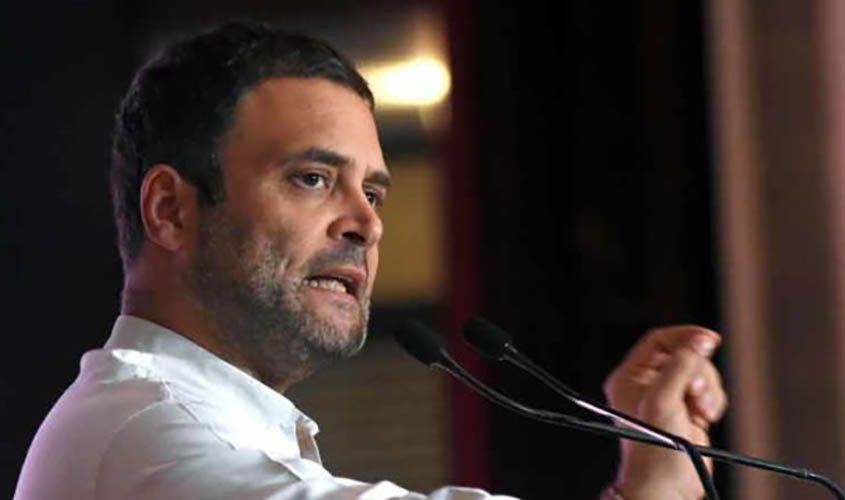In an apparent bid to carry out course correction, the Congress, by deciding to back Janata Dal (Secular) leader H.D. Kumaraswamy for the Chief Minister’s position in Karnataka, has sent out strong signals to regional outfits that it was willing to play second fiddle. As a matter of fact, the message that has been generated is that it was imperative for the Congress to weaken the BJP and so in the process strengthen the secular forces rather than pursuing power for itself.
The party’s decision was also aimed at changing the perception created after Rahul Gandhi last week indicated that he was willing to be the Prime Ministerial nominee in case the Congress formed the government post the 2019 Lok Sabha elections. The remark assisted the BJP in changing the narrative of the Karnataka Assembly elections, where it was finding it difficult at that given time in surging ahead in a contest showcased as the one between Prime Minister Narendra Modi and the then Chief Minister Siddaramaiah. After Rahul’s willingness to be projected as PM candidate, the BJP shrewdly altered its discourse and converted it into a Modi versus Rahul fight. This visibly worked to the advantage of the saffron brigade, and the BJP romped home to victory in 104 out of 222 Assembly segments with the Congress securing solely 78 seats.
Rahul’s self declaration did not sit well with the regional satraps, who were convinced that the only way of halting the BJP’s bid next year was to forge a close alliance and assimilation of the smaller parties. This can be achieved only if the Congress and its president play the role of a facilitator instead of a spearhead. Some political observers have the propensity of citing the example of the coalition that was formed following a clarion call given by Sonia Gandhi during the Shimla conclave in July 2003, wherein she invited all like-minded “secular” forces to accept her leadership so as to take on the “communal” forces led by Atal Behari Vajpayee.
The alliance succeeded due to the fact that the Congress enjoyed power in more than half a dozen states, besides having around 115 members in the Lok Sabha. It was the largest formation to take on the BJP, and had leaders who possessed the prowess to ensure that in a face-to-face confrontation with the NDA, they could emerge victorious.
This situation is now non-existent. The Congress had secured only 44 seats in the 2014 Parliamentary polls—its lowest figure ever—and today is reduced to governing only Punjab and Puducherry. Modi had mockingly stated during the Karnataka campaign that the Congress was likely to become a PPP (Punjab, Puducherry Party) after the polls, and he has been proved correct. The Congress and its leadership have lost credibility, and though Rahul Gandhi is always made the fall guy, the pitiable plight of the party is in fact more on account of Sonia Gandhi and her coterie.
Even after Rahul was elected as Congress president, the impression that is doing the rounds is that many key decisions were being taken by Sonia Gandhi in her capacity as the UPA chairperson. The nominees for the last Rajya Sabha elections were decided without Rahul being completely in the know. He is understood to have asked a Rajya Sabha nominee, who phoned to thank him, whether his name had been officially announced. Earlier, Siddaramaiah had politely declined his request to nominate Sam Pitroda, a family friend, for the Rajya Sabha on a Congress ticket, citing the Assembly polls as the reason for not including “outsiders”.
Perceptibly, the message that went out was that Rahul was unable to get the candidate of his choosing to the Upper House after being overruled by the Chief Minister. During the Punjab Cabinet expansion, he seemed disinclined to include one particular senior MLA in the ministry, though the Chief Minister was backing him. The matter went back and forth, and he finally succumbed to pressure following the intervention of Sonia Gandhi.
It is accurate, that so far as appointments in the organisation are concerned, Rahul has been able to have his way. The majority of his appointees lack gravitas, and are viewed to be lightweights in a party where seniority and acquaintance with traditions are seen to be potent points for leaders. In political circles, an entertaining anecdote being narrated concerns a young leader with exceptional potential, who, at a social gathering was asked when he would become the Chief Minister of his state; without batting an eyelid, the politician shot back that it would be so when Rahul would become the Prime Minister.
The short point is that in any future alliance, regional satraps would find it difficult to accept Rahul Gandhi as their leader, even though he has unanimously been elected the president of the oldest political party in the country. At this stage, even Sonia Gandhi does not have the same brand of endorsement she possessed way back in 2003, and it is strenuous to imagine whether the insecure clique would allow anyone else within the party to become its leader.
Now that Rahul has shown the grace to allow Kumaraswamy to steer the anti-BJP charge in Karnataka, he could very well replicate it in other states as well, by remaining in the background, while enabling a more combative leader to pilot the challenge. Between us.

